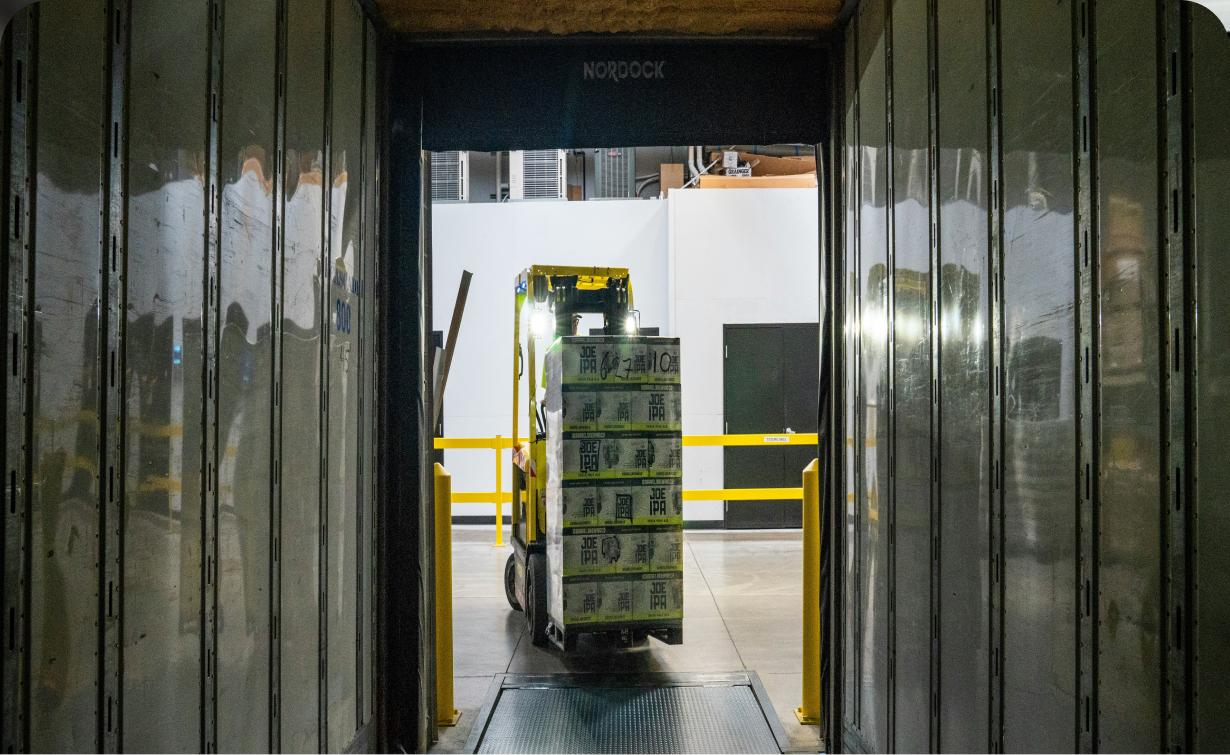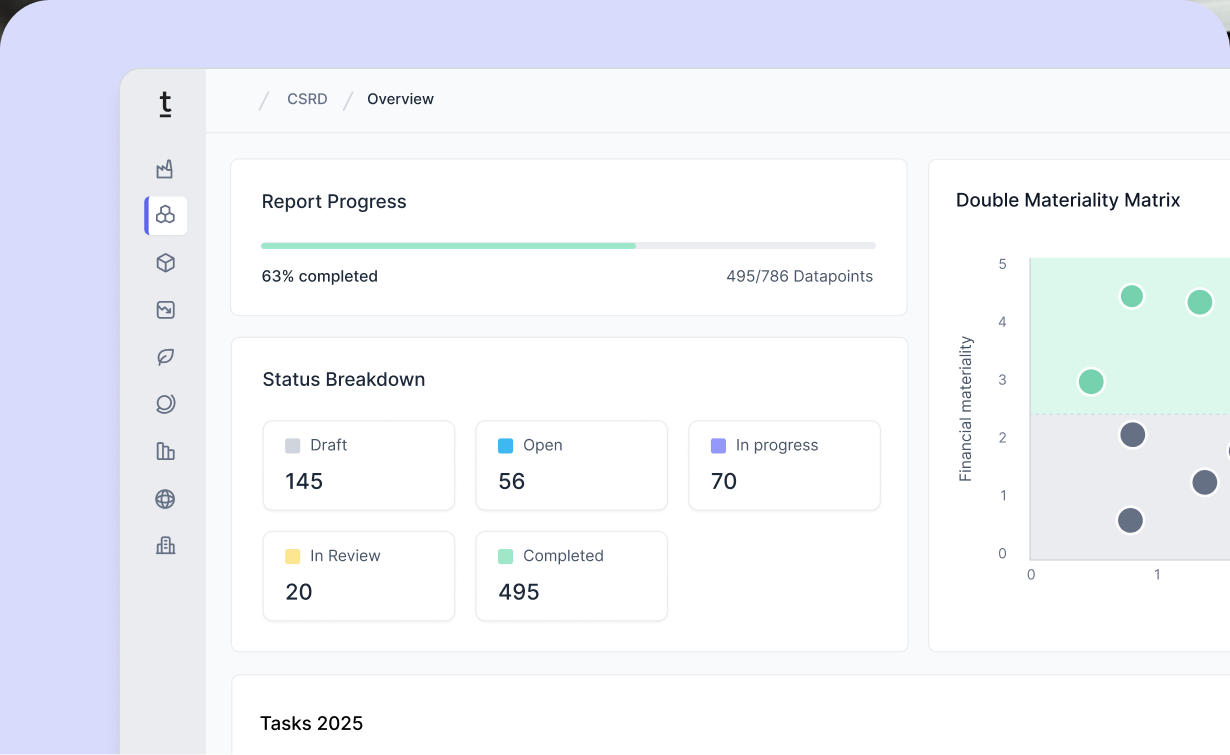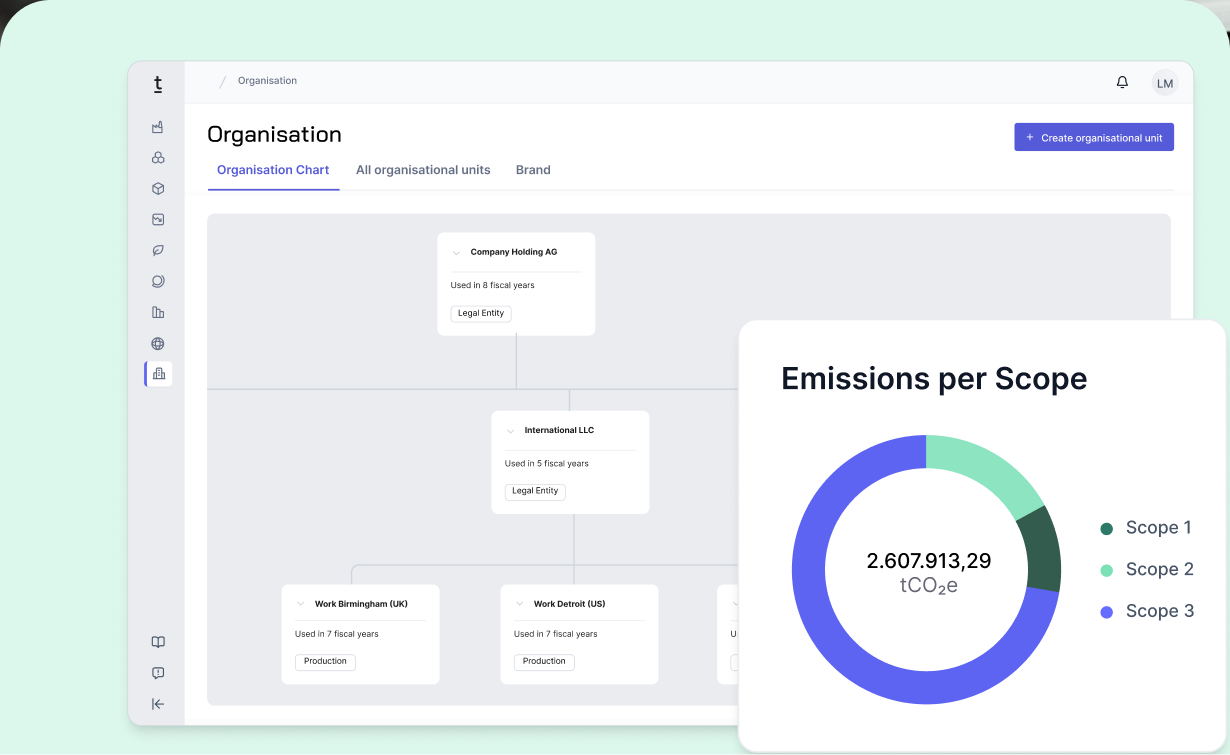ISO 14001 explained: Definition, goals, and requirements

What is ISO 14001?
ISO 14001 is an international standard for environmental management systems that helps organizations identify, assess, control, and continuously improve their environmental impact. A certified environmental management system according to ISO 14001 is valid and recognized worldwide. It provides companies with a forward-looking path toward ecological responsibility and accountability, making it a central component of corporate environmental protection. On this page, you will find everything you need to know about the standard.
The standard was developed in 1996 by the International Organization for Standardization (ISO) and forms the framework for systematically developing and implementing an environmental management system that can be part of a holistic sustainability strategy.
The main goal is to ensure compliance with legal requirements and to consciously manage and minimize a company’s negative impact on the environment, such as soil or air pollution. ISO 14001 helps companies proactively identify, control, and continuously improve the environmental impacts of their business processes.
In addition, an already implemented ISO standard supports companies in fulfilling sustainability reporting obligations and responding to customer inquiries about their sustainability performance.
In day-to-day operations, environmental management focuses on processes that may affect the environment — for example, activities involving resource use, emissions, or wastewater. The approach follows a systematic method based on the well-known PDCA (Plan-Do-Check-Act) cycle
How are environmental aspects evaluated under ISO 14001?
An environmental aspect is a specific physical component of an activity that can have an impact on the environment. The evaluation of environmental aspects under ISO 14001 takes place within the framework of an Environmental Management System (EMS) and is an important step in identifying and assessing the environmental impacts of an organization’s activities, products, or services. ISO 14001 does not prescribe a specific method for evaluating environmental aspects but requires organizations to use a systematic approach to identify and assess them.
Six steps that are generally followed when evaluating environmental aspects in accordance with ISO 14001:
- Identification of activities: The organization identifies all relevant activities related to its business processes, products, or services. This may include production activities, supply chain processes, energy consumption, and waste management.
- Identification of environmental aspects: For each identified activity, the associated environmental aspects are determined. Examples include emissions of pollutants, consumption of natural resources, land use, or waste disposal.
- Assessment of environmental impacts: After identifying the environmental aspects, their impacts on the environment are evaluated. This includes quantifying and qualifying the impacts, such as determining the amount of pollutant emissions, the volume of waste generated, or energy consumption.
- Risk assessment: Following the evaluation of environmental impacts, a risk assessment is carried out to determine which aspects are potentially more significant and therefore require particular attention.
- Prioritization: Based on the evaluation results, priorities are set for managing and controlling environmental aspects. This helps determine which aspects need to be addressed most urgently.
- Documentation: The results of the evaluation and prioritization of environmental aspects should be recorded in a document, such as an environmental aspect register. This document is an important component of the Environmental Management System in accordance with ISO 14001.
What are the objectives of environmental management according to ISO 14001?
In addition to identifying environmental aspects and their impacts, ISO 14001 requires organizations to set goals for addressing these impacts. Environmental objectives are therefore a key component of an environmental management system under ISO 14001. They must be defined by the organization itself and be specific and measurable, showing how the company plans to improve its environmental performance and fulfill its environmental commitments.
The starting point for these objectives is always the relevant environmental aspects of the organization, which must be considered when setting targets. Typical environmental goals may include reducing energy consumption and costs, minimizing waste, lowering greenhouse gas emissions, or increasing resource efficiency.
These objectives must be documented in writing, together with the related environmental aspects and impacts, in the form of a corporate environmental policy. The organization’s top management is responsible for ensuring their implementation.
Requirements of ISO 14001
Environmental management under ISO 14001 sets out a range of criteria that companies must meet to achieve certification. The PDCA cycle (Plan-Do-Check-Act) defined in ISO 14001 ensures that organizations not only plan and implement their environmental objectives but also monitor them continuously and take corrective actions if necessary. In this way, ISO 14001 supports a process of continuous improvement.
The core elements of ISO 14001 are:
- Planning: Defining environmental objectives and related measures, responsibilities, and procedures.
- Implementation: Carrying out the established measures and procedures.
- Checking: Reviewing responsibilities, procedures, and measures with regard to environmental objectives and the organization’s environmental policy.
- Improvement: Adjusting responsibilities, procedures, measures, and, if necessary, the environmental objectives and policy.
ISO 14001 can be applied by organizations of any type and size, regardless of geographic, cultural, social, or ecological context. However, it does not set absolute performance requirements. This means that two companies performing similar activities but showing different levels of environmental performance can still both be compliant with ISO 14001.
The key requirements of ISO 14001 are:
- Development of a written environmental policy/strategy approved and implemented by top management
- Identification of environmental impacts of business activities, such as energy and water consumption, emissions, waste management, or supply chain impacts
- Setting environmental objectives and developing and implementing appropriate measures to achieve them
- Establishing and implementing control procedures to identify and correct deviations at an early stage
- Determining and complying with applicable environmental laws, regulations, and requirements for the organization’s activities, products, or services
- Introducing a documentation system to ensure that relevant information is accessible, transparent, and clearly structured for employees involved
ISO 14001 Certification
Companies can have their compliance with the standard verified by an independent certification body – this is not mandatory but serves as proof of commitment to sustainability. Certification is valid for three years, with annual surveillance audits. After this period, recertification is required.
This certification is important as taking ecological responsibility is increasingly in focus. Demands are rising not only from customers but also through legal requirements such as the EU CSRD, which calls for greater commitment to environmental management. Sustainability certification can therefore become a decisive competitive advantage for companies.
In addition to ISO 14001, there is ISO 14005, which guides small and medium-sized enterprises in gradually implementing an environmental management system.
Revision of ISO 14001
The last update of ISO 14001 was in September 2015. The DIN EN ISO 14001:2015 can be applied by companies of any size and industry and is based on the High-Level Structure. This allows easy integration into other management systems and makes it compatible with further standards such as ISO 9001 for quality management.
Currently, ISO 14001:2015 is under revision. The updated version is expected to be published at the end of 2025. Only minor adjustments are anticipated, intended to make the requirements clearer and easier to understand. According to the German Society for Quality, no new requirements are expected.
Due to the different updates, it is important when certifying and publicly referencing the standard to always state the full name of the ISO standard, including the reference to the publication year of the version, e.g., “certified according to ISO 14001:2015.”
The ISO 14001:2015 standard can be purchased on the ISO website.
Difference to EMAS
Unlike the internationally recognized ISO 14001, EMAS (EU Eco-Management and Audit Scheme) applies only to companies operating in the EU. EMAS goes beyond the requirements of ISO 14001 by placing greater emphasis on improving environmental impacts and also requiring the publication of an environmental statement. Finally, with EMAS, third-party certification is mandatory, whereas ISO 14001 can also be self-declared without external validation. However, the two standards can be well combined.

















































.avif)







.jpg)
.jpg)




















-p-800.webp.avif)
-min-p-800.webp.avif)






-p-800.webp.avif)

